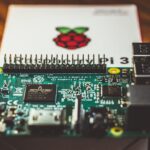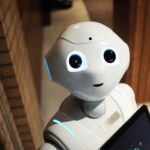
Course Length: 30-50 hours
Description
In this STEM unit, the Internet of things is introduced in the context of energy and electricity. Students understand that electricity is the main source of energy in an IoT system. Students also learn that sensors and actuators are the main components of an IoT system where sensors transform tangible input into electrical pulses and actuators transform the electrical input into tangible action.
Through the lessons, students learn how the discovery of electricity and then the invention of the Internet influenced the industrial revolution resulting in the emergence of new technologies, such as IoT. Students will then learn about energy sources, electrical circuits, and IoT components. They will be then introduced to a block-based programming language that will enable them to bring together their scientific knowledge to design and build innovations with a noble purpose.
Objectives
By the end of this unit, students will be able to:
- Understand the relationship between the industrial revolution and the emergence of IoT
- Describe IoT systems, their advantages and disadvantages, and their components.
- Describe energy sources and differentiate between renewable and nonrenewable sources.
- Build and simulate electrical circuits
- Use block-based programming to build programs and animations
- Use the engineering design process to build models that solve problems








